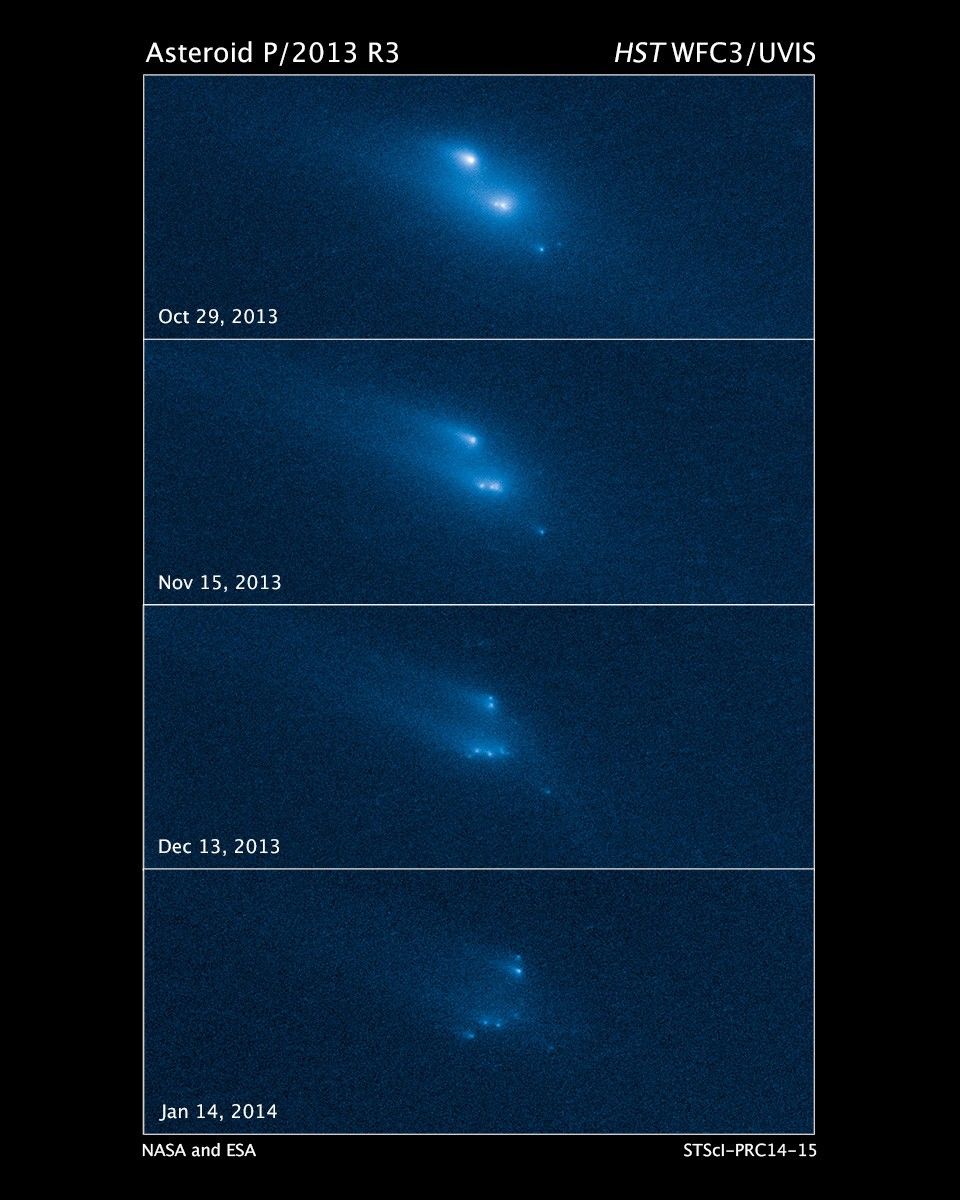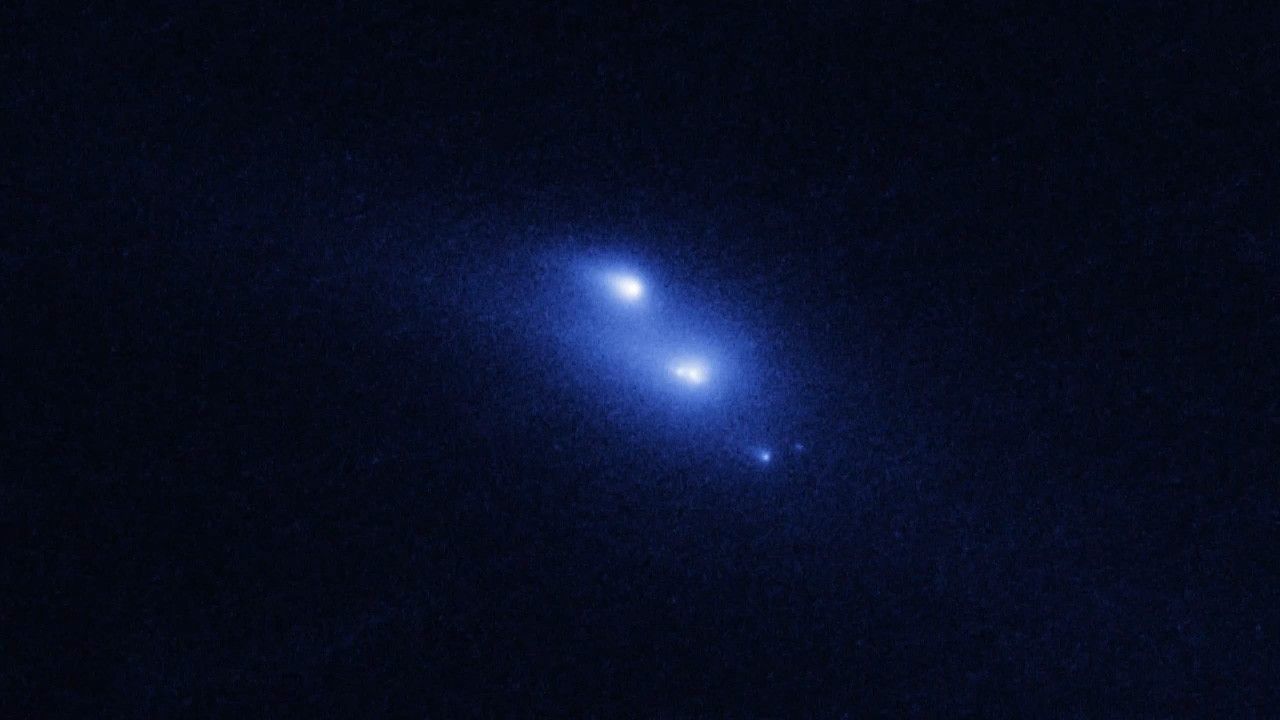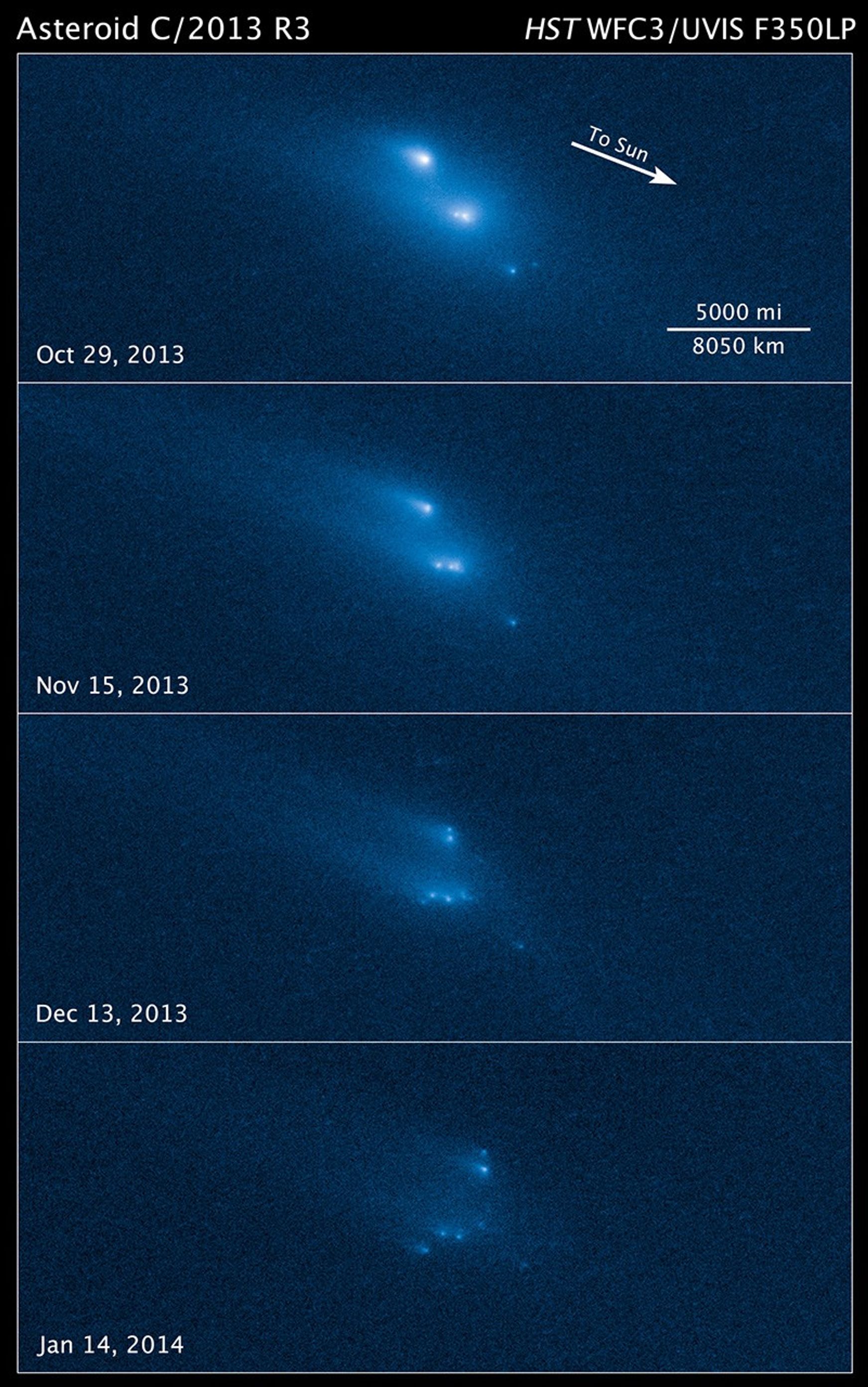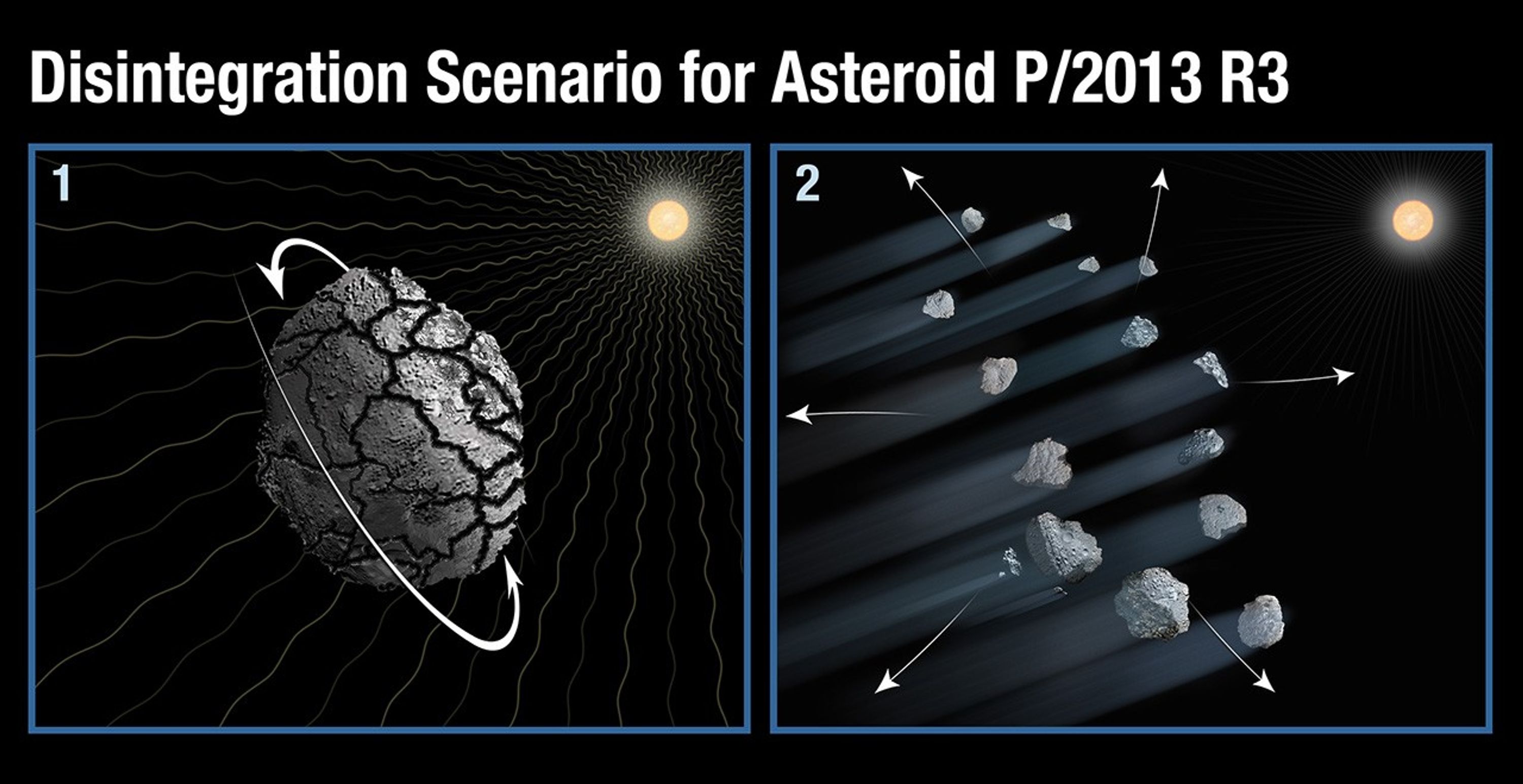1 min read
Disintegration of Asteroid P/2013 R3

This series of Hubble Space Telescope images reveals the breakup of an asteroid over a period of several months starting in late 2013. The largest fragments are up to 180 meters (200 yards) in radius, each with "tails" caused by dust lifted from their surfaces and pushed back by the pressure of sunlight. The ten pieces of the asteroid drift apart slowly and show a range of breakup times, suggesting that the disintegration cannot be explained by a collision with another asteroid. One idea for the breakup is that the asteroid was accelerated by sunlight to spin at a fast enough rate to fly apart by centrifugal force. The images were taken in visible light with Hubble's Wide Field Camera 3.
About the Data
- Data DescriptionData DescriptionProposal: A description of the observations, their scientific justification, and the links to the data available in the science archive.
Science Team: The astronomers who planned the observations and analyzed the data. "PI" refers to the Principal Investigator.The Hubble data are from proposal 13612: D. Jewitt (University of California, Los Angeles), H. Weaver (JHU/APL), J. Agarwal (Max Planck Institute for Solar System Research), S. Larson (University of Arizona), and M. Mutchler (STScI). - InstrumentInstrumentThe science instrument used to produce the data.HST>WFC3/UVIS
- Exposure DatesExposure DatesThe date(s) that the telescope made its observations and the total exposure time.October 2013 - January 2014
- FiltersFiltersThe camera filters that were used in the science observations.F350LP (long pass)
- Object NameObject NameA name or catalog number that astronomers use to identify an astronomical object.P/2013 R3
- Object DescriptionObject DescriptionThe type of astronomical object.Disintegrating Comet/Asteroid
- Release DateMarch 6, 2014
- Science ReleaseHubble Witnesses an Asteroid Mysteriously Disintegrating
- Credit

Color Info
Color InfoA brief description of the methods used to convert telescope data into the color image being presented.
This image was originally black and white and recorded only overall brightness. These brightness values were translated into a range of bluish hues. Such color "maps" can be useful in helping to distinguish subtly varying brightness in an image.

Compass and Scale
Compass and ScaleAn astronomical image with a scale that shows how large an object is on the sky, a compass that shows how the object is oriented on the sky, and the filters with which the image was made.
Related Images & Videos

Disintegration of Asteroid P/2013 R3
This video is assembled from a series of Hubble Space Telescope images reveals the breakup of asteroid P/2013 R3 over a period of several months starting in late 2013. The largest fragments are up to 180 meters (200 yards) in radius, each with "tails" caused by dust lifted from...
Share
Details
Last Updated
Aug 17, 2025
Contact
Media
Claire Andreoli
NASA’s Goddard Space Flight Center
Greenbelt, Maryland
claire.andreoli@nasa.gov




































